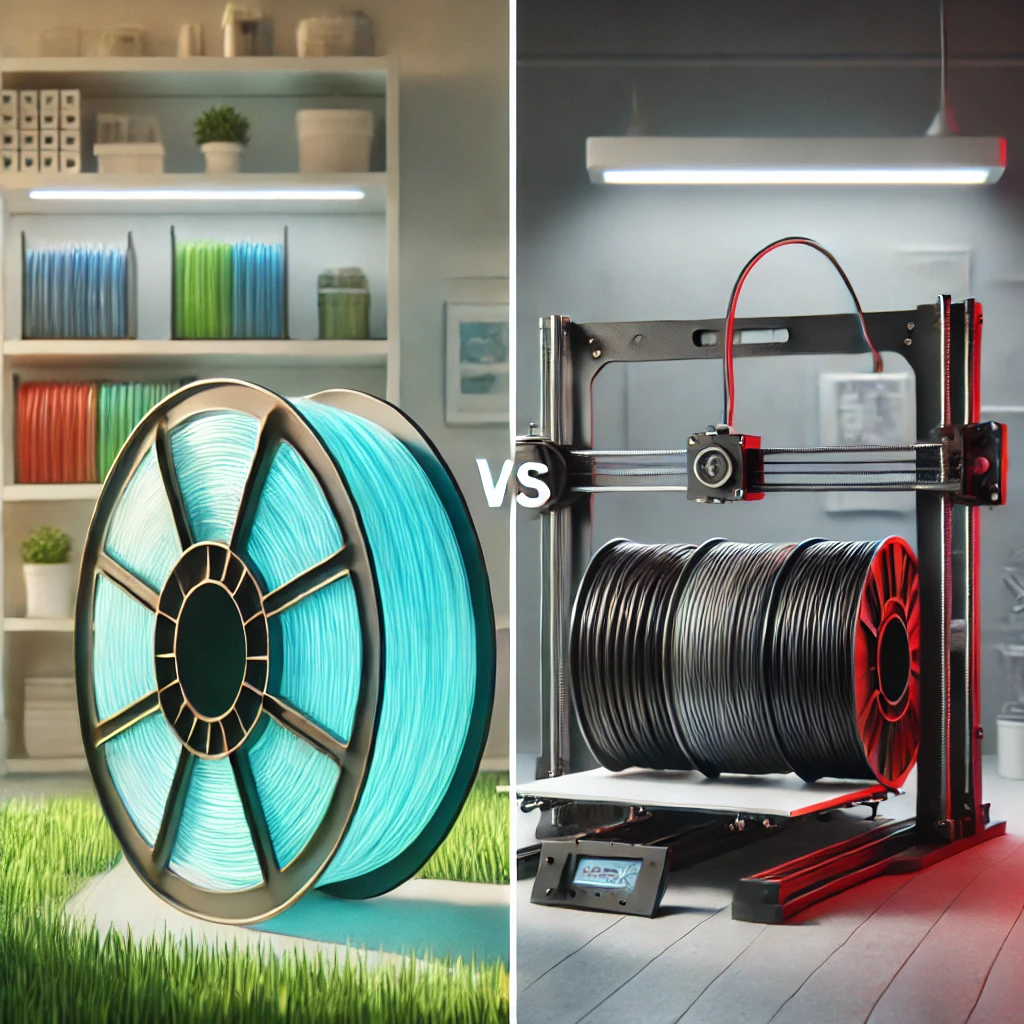PLA vs. ABS Filament for 3D Printing

When it comes to 3D printing, choosing the right filament is crucial to achieving the desired results. Among the most popular options are PLA (Polylactic Acid) and ABS (Acrylonitrile Butadiene Styrene), each with its own set of advantages and disadvantages. In this guide, we’ll break down the key differences between PLA and ABS filament, helping you decide which one is best for your 3D printing projects.
Understanding PLA Filament
PLA is a biodegradable thermoplastic derived from renewable resources like corn starch or sugarcane. It’s known for its ease of use, making it a popular choice among beginners. PLA is less likely to warp during printing, which allows for a smoother print process even without a heated bed. Additionally, PLA emits a sweet, non-toxic smell when heated, making it a more pleasant material to work with in confined spaces.
Pros of PLA:
- Easy to print with
- Minimal warping
- Biodegradable and eco-friendly
- Wide range of colors and finishes
- No harmful fumes
Cons of PLA:
- Lower heat resistance
- Brittle compared to ABS
- Less durable for functional parts
Exploring ABS Filament
ABS, on the other hand, is a petroleum-based thermoplastic known for its toughness and impact resistance. ABS is widely used in the manufacturing of durable goods, including automotive parts, toys like LEGO bricks, and various household items. It requires a higher printing temperature and a heated bed to prevent warping, making it a bit more challenging to print with than PLA. However, the resulting prints are much more durable and heat-resistant.
Pros of ABS:
- High durability and strength
- Better heat resistance
- Ideal for functional parts and mechanical components
- Can be smoothed using acetone for a glossy finish
Cons of ABS:
- Requires a heated bed and enclosure
- Prone to warping without proper settings
- Emits strong, potentially harmful fumes during printing
Which Filament Should You Choose?
The choice between PLA and ABS depends largely on the specific requirements of your project. If you’re printing detailed, decorative items or prototypes that don’t need to withstand high temperatures, PLA is likely the better option. It’s easier to print with and offers a more environmentally friendly solution.
However, if your project demands strong, durable parts that can endure stress and higher temperatures, ABS would be the preferred filament. Just be prepared to deal with the additional challenges of printing with ABS, such as warping and fumes.
Both PLA and ABS have their place in the world of 3D printing, and the best choice depends on your particular needs. For beginners or those focusing on non-functional prints, PLA is a great starting point. For more advanced users or those creating functional parts, ABS offers the durability and heat resistance needed for robust applications. By understanding the strengths and limitations of each material, you can make an informed decision that best suits your 3D printing goals.



